Invisible man cloak – from myth to reality.
Being able to become invisible when needed is such an appealing idea.
For centuries, the only way “to achieve” it was by the power of magic.
However, now, thanks to the latest research in advanced materials, the invisibility cloak – like the one in the Harry Potter movie – can become a reality of our world too, not just the fairy tale ones.
Invisible Man – Retro-Reflection, Japan 2003
The research to obtain “invisibility” is nothing new.
Back in 2003, a team led by Dr. Susumu Tachi, from Keio University, created the first retro-reflective projection tech.
It was a simple idea that involved a computer, a video camera, and a projector to shine the background images onto the front of a subject wearing a specialized piece of clothing.

The special piece of clothing is, in fact, a new type of fabric made of glass beads only 50 microns wide.
Almost like the screens at the cinema, the fabric was able to reflect light back at the source.
It was an illusion, tricking your eye with image projections.
The tech could be used with static screens, more or less like the one in the “Mission Impossible” movie, as seen below.
Invisible Man – Electromagnetic Waves, U.S. 2006
Three years later, in 2006, John Pendry from the Imperial College London together with David Smith from Duke University presented the theory of “transformation optics” in a paper in Science.
Based on the above theory, thanks to the research into metamaterials paying off, “the world’s first invisibility cloak” was tested with success at Duke University in Durham, North Carolina, United States.
To better understand the level of breakthrough, his research on the invisible cloak was described, by the Science Magazine, as a top 10 scientific discovery of 2006.
“You can take electromagnetic waves, wrap them around the region you want to conceal, and restore them on the other side of the object. An uncloaked object would cause an interruption in the waves, creating a shadow behind the object. The concept that you can cloak something and make something invisible is what we have just demonstrated here,” said David R. Smith, a physicist at Duke University.
It is important to stress out that the metamaterial does not hide any objects from the human eye, but only from microwaves.
However, it is not perfect. There are small reflections that prevent the complete “disappearance” of the object.
Invisible Man – Gold Rings, Maryland, U.S. 2007
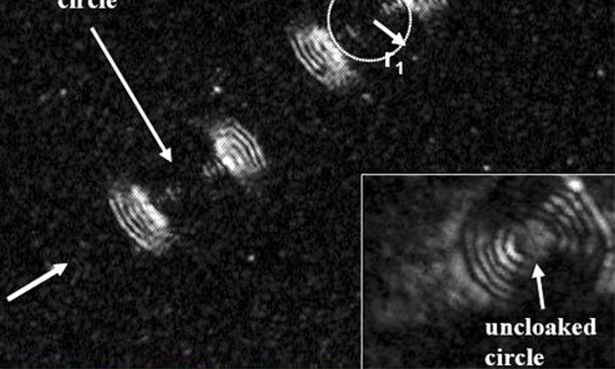
In 2007, Igor Smolyaninov, a physicist at the University of Maryland incorporated earlier theories proposed by Vladimir Shalaev from Purdue University.
Smolyaninov and his team constructed a metamaterial able to bend visible light around an object.
At only 10 micrometers wide, the cloak uses concentric gold rings injected with polarized cyan light.
These rings bend the incoming light waves away from the hidden object, thus making it invisible.
Invisible Man – Natural Crystals, Birmingham, U.K. 2011
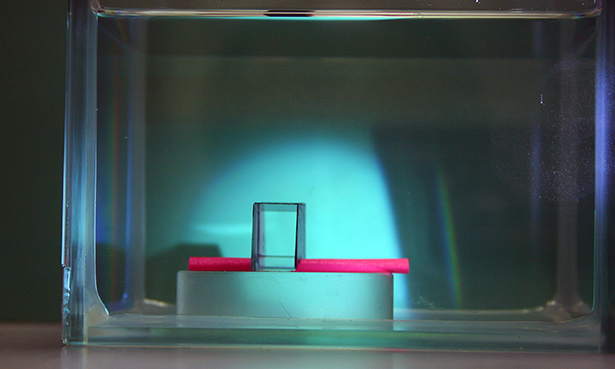
Researchers from the University of Birmingham, together with colleagues at the Imperial College in London, and experts from the Technical University of Denmark, have demonstrated a new “invisibility cloak” that can hide three-dimensional objects large enough to be visible to the human eye.
For the first time, the teams from the UK and Denmark have not used metamaterials but a natural crystal called calcite, and the size of the cloaking area was only limited by the scale of the crystals used.
Calcite is a transparent mineral with double-refraction properties. It means that the light enters the calcite in point one and then splits into two points or rays of different polarizations. The light is also traveling in different directions and at different speeds.
Invisible Man – Carbon Nanotubes, Texas, U.S. 2011
Also in 2011, a team at the University of Texas at the Dallas NanoTech Institute used sheets of carbon nanotubes wrapped up into cylindrical tubes.
In the experiment, the researchers heated the sheets electrically, which transferred the heat to the surrounding area, causing the light to bend away from the carbon nanotube sheet, effectively cloaking anything behind them.
The experiment, in fact, replicated the “hot sand effect” or the “mirage” effect.
It is also known as photothermal deflection.
If there is a temperature difference between the sand and the air, the rays of the light bend.
Invisible Man – Electromagnetic Waves II, U.S. 2012
A year later, a grad student at Duke University, Nathan Landy, came up with a solution to the microwave limitations from the previous models. Landy worked with David R. Smith, one of the researchers on the original Duke cloaking device, to create the “perfect” cloaking device this time.
“We built the cloak, and it worked,” he said in a press release. “It split light into two waves which traveled around an object in the center and re-emerged as the single wave with minimal loss due to reflections.”
The key change was the addition of copper strips to the metamaterial that shields an object from incoming light to create a better material, coupled with a slight change in its orientation to solve a problem caused by dividing the metamaterial of the cloaking device into quadrants.
Invisible Man – Metascreen, U.S. 2013
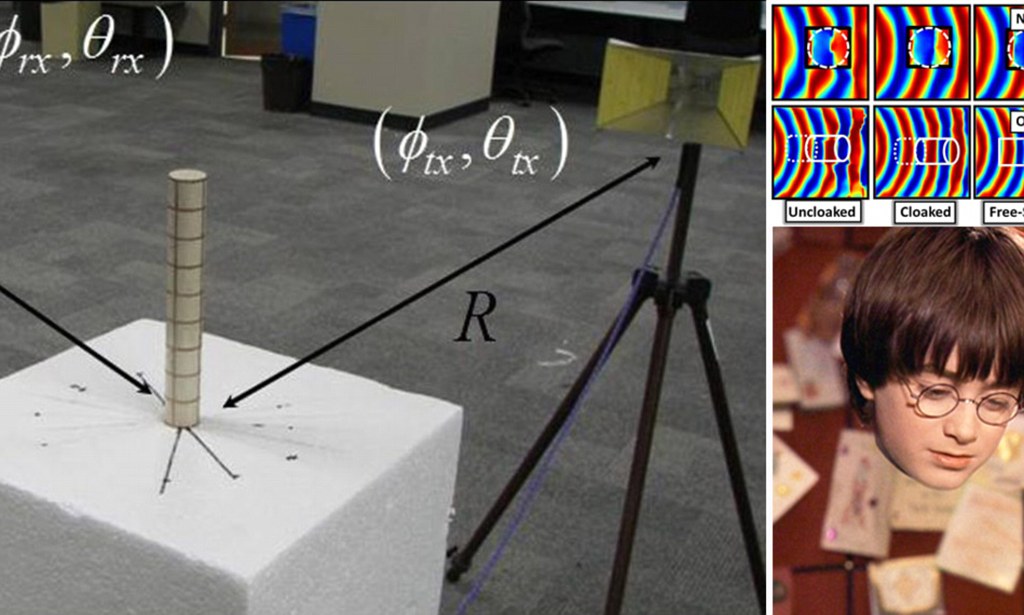
Embargoed Until 8pm Tonight (MONDAY)
Pictured: farFieldSetup – Experimental setup of the cloaking apparatus with far-field measurements. Microwaves are sent from the receiver, through the cylinder, to the detector. The measuring antennas are moved around the object.
Scientists have developed an ultra-thin invisibility cloak.
Up until now, invisibility cloaks put forward by scientists have been fairly bulky contraptions ñ an obvious flaw for those interested in Harry Potter-style devices.
However, researchers have now developed a cloak that is just micrometres thick and can hide three-dimensional objects from microwaves in their natural environment, in all directions and from all of the observers’ positions.
A year later the researchers from the University of Texas at Austin, re-invented the invisibility cloak.
This time, they have used an ultrathin layer of metamaterial, called the “metascreen.”
The cloak is only a few micrometers thick and able to hide 3D objects from microwaves, in their natural environment. It hides them from all angles and all directions.
Led by University of Austin professor Andrea Alù, the metascreen cloak contains strips of 66 µm-thick copper tape attached – in a fishnet design – to a 100 µm-thick, flexible polycarbonate film.
It is for the first time when the cloak is able to shield a whole object.
It is a step forward from the “passive” technology, requiring no power source.
Invisible Man – Paraxial Rays, U.S. 2014

In 2014, John Howell, a professor of physics at the University of Rochester, and graduate student Joseph Choi came up with the “Paraxial ray optics cloaking” concept.
Not a cloak per se but a combination of lenses creating a cloaking field.
It is an optical illusion, and it happens because the light rays that make up the imaged background pass around the object as if it is not there.
Invisible Man – Nanoantennas, U.S. 2015
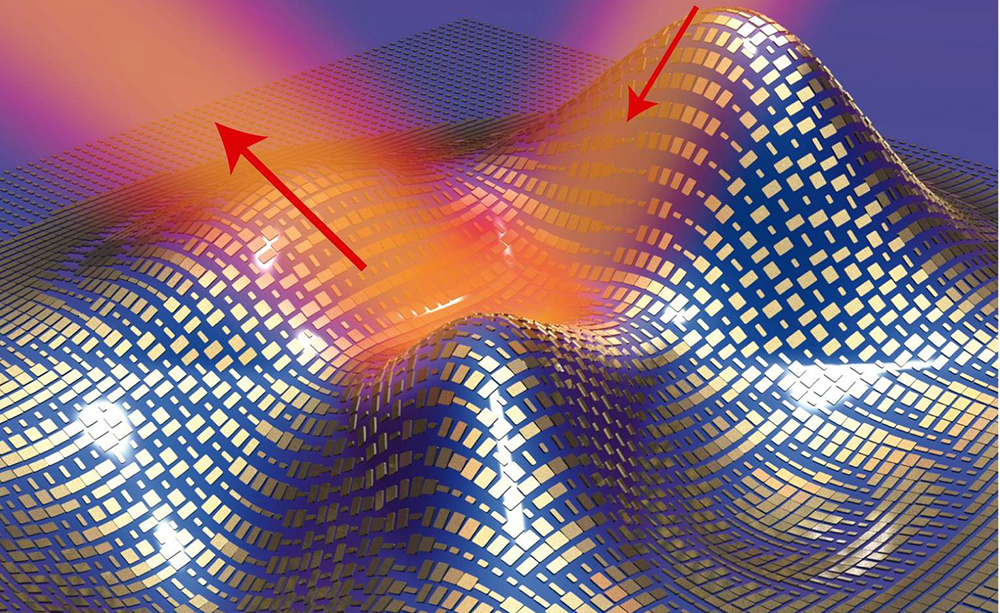
The metasurface skin cloak made from an ultrathin layer of nanoantennas (gold blocks) covering an object. The light reflects off the cloak (red arrows) as of a mirror.
The most recent project has a team of researchers from UCB, University of Berkeley, California behind.
They have created an 80 nanometers ultra-thin invisibility cloak that makes small objects “disappear.”
The secret behind the invisibility cloak is the tiny gold brick-like “nanoantennas.”
The little “bricks” reroute the light waves away from the cloak, thus, making it invisible.
The cloak is so thin that is almost 2D. Still, it can be used to cover any 3D objects.
The “metasurface” of the cloak is designed to act as a flat mirror, and this light-reflecting ability is what makes it invisible.
The study “An ultrathin invisibility skin cloak for visible light,” was published in the Science Journal.

Left to right: Yuan Wang, Zi Jing Wong, and Xiang Zhang. The masterminds of the ultra-thin invisibility “skin” cloak.
“Unlike previous attempts, this design is scalable. We can now cover larger objects without increasing the thickness of the cloak. Also, conceal objects that have sharp edges and peaks. In the near future, people are going to use these materials as a wearable garment or decoration,” said Xingjie Ni, assistant professor at Pennsylvania State University.
Invisible Man – What’s Next?
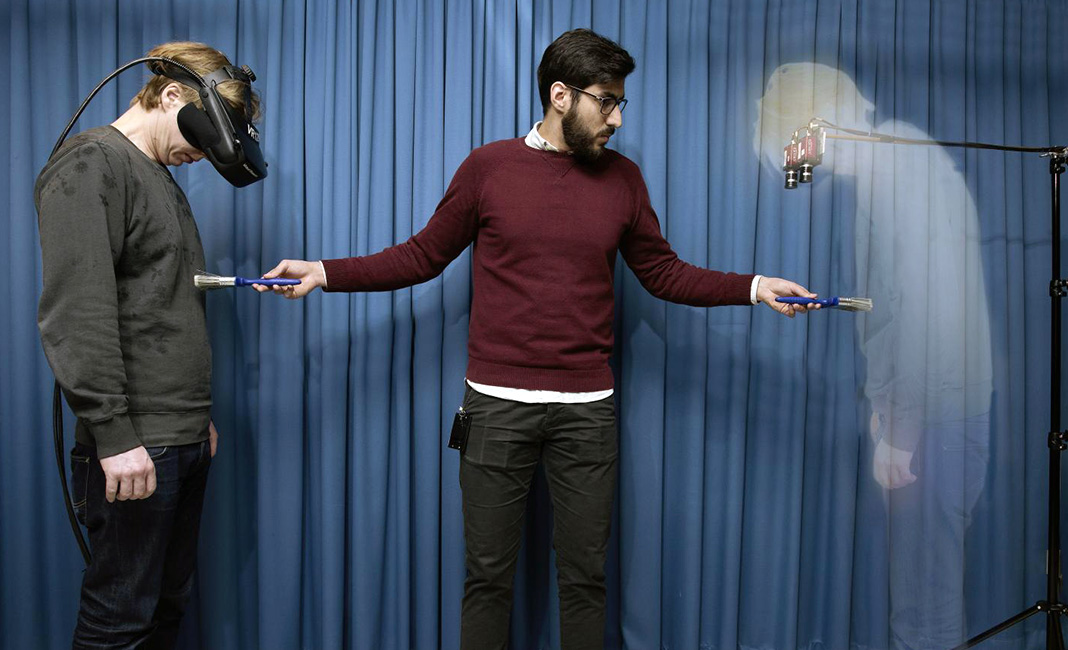
The next step is working to build a cloaking device that can hide bigger objects in three-dimensions.
However, even apart from cloaking devices, the metamaterial techniques studied have other applications, including fiber optics.
So far, all invisibility cloaks are constructed out of man-made material with unnatural properties.
The metamaterials are structures with a negative refractive index.
It is a property that never occurs in nature. In nature, all materials have a positive refractive index.
The metamaterials with their negative refractive index permit for the creation of amazing things, such as superlenses that can go beyond the diffraction limit, and invisibility cloaks.
The power of nanofabrication is endless, and it is exciting to witness the future breakthrough in optics coming from nanostructured artificial surfaces.
One constant so far, though, is that all of the objects used in the experiment are stationary and small. Very small.
I would not count on having your invisibility cloak anytime soon.
That said, the spinoffs from the cloaking research have the potential to improve many industries.
Do you think there is something else to add to this story? Share it in the comments.






